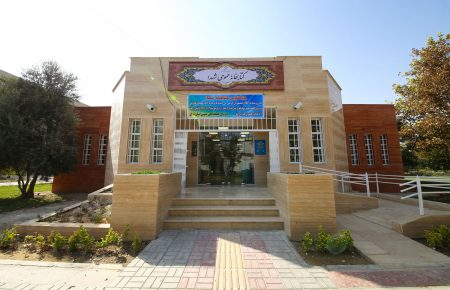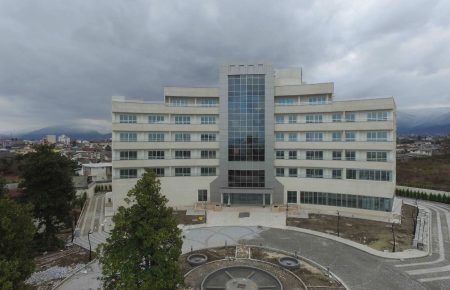Science models play an essential role in advancing scientific knowledge and understanding by giving simplified representations of elaborate systems and phenomena. These kind of models serve various functions in scientific research, which includes prediction, description, and clarification, and are employed across a variety of scientific disciplines to explore and elucidate the underlying principles ruling natural and engineered devices. This article examines the applying science models in exploration, focusing on predictive, descriptive, in addition to explanatory models in various medical disciplines.
Predictive models are accustomed to forecast future outcomes or even behavior based on current composition and understanding of system characteristics. These models employ mathematical equations, statistical algorithms, or maybe computational simulations to extrapolate from known data and prepare predictions about future states or trends. Predictive models are widely used in grounds such as climate science, epidemiology, finance, and engineering to help anticipate and mitigate threats, inform decision-making, and arrange for the future.
In climate science, for example , predictive models are more comfortable with simulate the Earth’s crissis system and project upcoming changes in temperature, precipitation, along with sea level rise beneath different scenarios of greenhouse gas emissions. These models integrate physical, chemical, and biological processes to reproduce the complex interactions between your atmosphere, oceans, land area, and ice sheets, providing insights into the drivers involving climate change and the prospective impacts on ecosystems, companies, and human societies.
Also, in epidemiology, predictive models are used to forecast the pass on of infectious diseases as well as assess the effectiveness of the health of the nation interventions such as vaccination activities and social distancing actions. These models incorporate variables such as population demographics, disorder transmission dynamics, and healthcare capacity to predict the velocity of epidemics and notify public health policy and preparation.
Descriptive models, on the other hand, widely-used to characterize and summarize discovered data or phenomena with out making explicit predictions in relation to future behavior. These versions aim to capture the patterns, trends, and relationships found in the data and provide insights in the underlying structure or design of the system being analyzed. Descriptive models are commonly used in fields such as ecology, economics, sociology, and data technology to analyze empirical data and also identify patterns or correlations that can inform theory advancement and hypothesis generation.
In ecology, try this for example , descriptive designs are used to analyze species prosperity and distribution patterns, contrast biodiversity, and quantify eco-system services such as carbon sequestration and nutrient cycling. These kind of models may use statistical strategies such as regression analysis, clustering, or machine learning to identify factors driving ecological habits and relationships, such as climate, habitat type, and kinds interactions.
In economics, descriptive models are used to analyze financial trends, market dynamics, and consumer behavior based on empirical data on prices, levels, and economic indicators. These kinds of models may employ econometric techniques such as time set analysis, panel data study, or input-output modeling to identify causal relationships, test financial theories, and inform policy decisions.
Finally, explanatory versions are used to elucidate the underlying components or causal relationships this drive observed phenomena. All these models aim to uncover the essential principles, processes, or legal guidelines governing the behavior of the method being studied and provide experience into how and exactly why certain outcomes occur. Instructive models are prevalent inside fields such as physics, hormone balance, biology, and engineering, the location where the goal is to understand the requisite laws of nature and the implications for real-world devices and phenomena.
In physics, for example , explanatory models such as Newton’s laws of movement and Einstein’s theory regarding relativity provide a theoretical system for understanding the behavior of matter and energy with macroscopic and microscopic scales. These models describe might principles governing the movements of objects, the behavior of light, and the structure of room and time, offering unique insights into the nature on the universe and its underlying symmetries and principles.
Similarly, inside biology, explanatory models like the theory of evolution through natural selection provide a conceptual framework for understanding the diversity of life and the mechanisms driving evolutionary change as time passes. These models elucidate the role of genetic change, natural selection, and adaptation in shaping the styles of biodiversity observed in characteristics, providing a unifying theory that will integrates findings from genetic makeup, ecology, paleontology, and other professions.
In engineering, explanatory designs such as the laws of thermodynamics and fluid dynamics offer a theoretical foundation for comprehending and designing systems for instance engines, turbines, and aeroplanes. These models describe the guidelines governing the conversion of energy and the flow of water in mechanical and arctic systems, enabling engineers for you to optimize performance, efficiency, and also safety in a wide range of purposes.
In summary, science models participate in a crucial role in technological research by facilitating auguration, description, and explanation involving natural and engineered techniques. Predictive models are used to outlook future outcomes based on latest observations and understanding, whilst descriptive models characterize and summarize observed data or perhaps phenomena. Explanatory models elucidate the underlying mechanisms or causal relationships driving observed new trends, providing insights into the basic principles governing the behavior of the system being studied. By making use of a diverse array of predictive, illustrative, and explanatory models, analysts can advance knowledge along with understanding across a wide range of methodical disciplines, from climate science and epidemiology to ecology, economics, physics, and architectural.



















